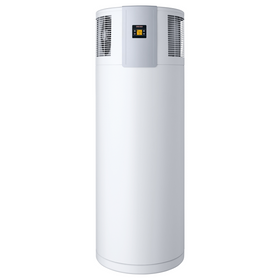
Do Wind Turbines Cause Cancer? 6 Myths of Renewable Energy
Last Updated: Feb 23, 2025On April 2nd of this year [2019], during a speech to the National Republican Congressional Committee, U.S. President Donald Trump claimed that "the noise (from windmills) causes cancer." Can this be true? An in-depth, 2015 Australian government study investigated the potential health effects of people living near windmills and found that cancer was undoubtedly not an issue and that "more evidence was needed to establish a link to any illness."
President Trump isn't the first to spread misinformation regarding the necessary transition towards renewable and sustainable energies. The fossil fuel industry has been at the heart of the Industrial Revolution and, in many ways, has made modern-day civilization possible. Our reliance on concentrated, ancient sunlight (as fossil fuels are often referred to) has given humanity a burst of energy which has essentially allowed us to exert our technological influence. Despite the increasingly clear evidence that the burning of fossil fuels is leading us towards an unprecedented ecological collapse, the sense of control and dominion over the natural world that fossil fuels have given us has made it difficult for many sectors of the population to accept the needed conversion to more sustainable sources of energy.
Economically speaking, the roughly 1,500 oil and gas firms registered on stock exchanges worldwide have a combined worth of around $4.65 trillion. The amount of vested economic interest in fossil fuels has also led to several blatantly false accusations and indictments against renewable energies that challenge the financial hegemony of the fossil fuel industries. Below, we attempt to dispel six of the most oft-repeated myths related to renewable energy solutions.
Myth #1: Renewable Energy is a Diminutive and Irrelevant Part of our National Electricity Grid
In the United States, fossil fuels continue to be our primary source of energy. Even though a residential solar panel system is being installed every two and a half minutes somewhere in the United States, around 80 percent of the energy consumed in the United States comes from fossil fuel sources. Due to this fact, many people assume that renewable energy is an irrelevant part of our national energy grid that is only accessible by wealthy homeowners.
In fact, in places like California, 20 percent of energy now comes from renewable sources, and that figure continues to grow on a year-by-year basis. The International Energy Agency estimates that "renewables will have the fastest growth in the electricity sector, providing almost 30% of power demand in 2023, up from 24% in 2017. During this period, renewables are forecast to meet more than 70% of global electricity generation growth, led by solar photovoltaic (PV) and followed by wind, hydropower, and bioenergy." These growth statistics show that renewables will continue to become an ever more important source of the energy we depend on.
Myth #2: Renewable Energy is Overly Expensive
Another major myth associated with renewable energy sources is that they are too expensive to be deployed on a massive scale. While natural gas continues to be the cheapest energy option in most of the United States, renewables continue to drop in price rapidly. One recent report by Forbes finds that onshore wind farms can produce electricity for as low as $0.04 per kilowatt-hour (kWh), while solar photovoltaic energy costs are down to $0.10 per kilowatt-hour kWh. The International Renewable Energy Agency (IRENA) finds that all renewable energy options will be economically competitive with fossil fuels by 2020.
In some areas of the country, transitioning to renewables will even save customers money. Over a decade ago, New York State determined that a 10 percent increase in local wind generation could reduce customer energy payments by over $300 million per year.
Myth #3: Renewable Energy is Unreliable and Unable to be Deployed on a Large Scale
One of the main challenges with solar and wind energy is that these renewable energies cannot be produced on-demand, as with fossil fuel sources of energy. Solar energy is only produced when the sun shines, and Eolic energy is only when the wind blows. However, countries like Costa Rica, where over 98 percent of energy comes from renewable sources, show that large-scale deployment of renewable energy is undoubtedly possible, especially when hydroelectric and geothermal energy options are included in the mix.
Table of Contents
- Myth #4: Cutting Reliance on Fossil Fuel Sources of Energy would ruin our Economy
- Myth #5: Renewable Energy Solutions Rely on Government Subsidies to Stay Competitive
- Myth #6: Renewable Energy Options also Have Huge Carbon Footprints

Home battery technology such as the Tesla Powerwall II has become much more efficient, thus allowing homeowners and potentially municipal grids to store large amounts of renewable energy for future use.
Myth #4: Cutting Reliance on Fossil Fuel Sources of Energy would ruin our Economy
Politicians who represent areas of the country where the fossil fuel industry has provided job security for thousands of people often claim that transitioning away from coal, oil, and natural gas would leave millions of people without jobs and damage the economy. The truth is that solar power (to name just one type of renewable energy option) employed about 350,000 workers in 2017, more than twice the number of coal industry jobs. As solar and other renewable energies continue to grow, they represent an opportunity for enormous economic growth while providing hundreds of thousands of new jobs.
Renewable energies tend to be much more decentralized than fossil fuel sources of energy. While only large, multinational corporations can competitively extract, refine, and sell fossil fuels such as coal, oil, and natural gas, solar and wind energies can be deployed on a local scale. Community-level renewable energy solutions such as community solar programs also allow for more energy autonomy and independence.
Myth #5: Renewable Energy Solutions Rely on Government Subsidies to Stay Competitive
Another common myth related to renewable energies is that they are only economically feasible due to government subsidies, such as the 30 percent solar tax credit (set to be reduced every year until it expires in 2022). However, what is ignored is that governments dole out at least $775 billion to $1 trillion annually in subsidies to the fossil fuel industry on an international level. In 2007 alone, the U.S. government spent upwards of $724 million in subsidies for the wind industry and $174 million for solar power. In comparison, that might seem like a lot. For comparison purposes, that same year, the U.S. provided $854 million for coal production and over a billion dollars to nuclear power. Governments have also spent enormous money on energy, and switching that funding to renewable energy sources does not represent any change in budget or policy.
Myth #6: Renewable Energy Options also Have Huge Carbon Footprints
People who oppose renewable energy options mention that renewable energies also have carbon footprints associated with producing and manufacturing solar panels and wind turbines. It is true that solar panels, for example, require an enormous amount of energy to melt the silicone used in the PV panels. Most of that energy comes from fossil fuel sources. However, renewable energy sources can quickly pay off their carbon footprint, unlike coal, oil, or natural gas.
Some estimates find that depending on where they are produced and shipped, solar panels might offset the carbon emissions related to their manufacture in just four years. Since most solar PV panels will last for at least 25 years, solar panels can drastically reduce carbon emissions compared to fossil fuel sources of energy.
So the next time you read or hear a claim that renewable energy is not in our future, for whatever reason, think twice—because renewable energy is, thankfully, becoming a significant part of our Economy—and it also happens to be much better for our health and our planet.
Tobias Roberts
Tobias runs an agroecology farm and a natural building collective in the mountains of El Salvador. He specializes in earthen construction methods and uses permaculture design methods to integrate structures into the sustainability of the landscape.










